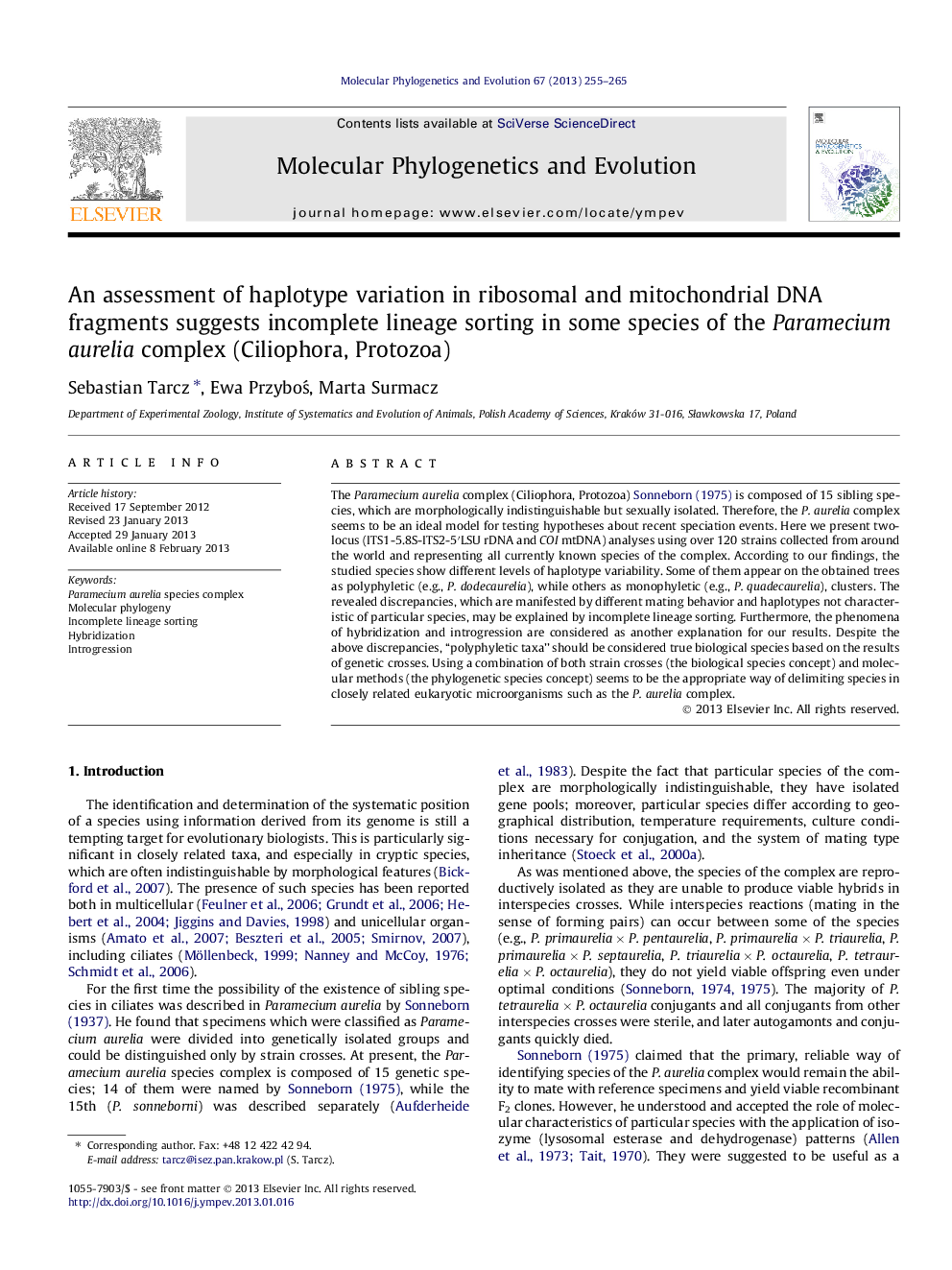| Article ID | Journal | Published Year | Pages | File Type |
|---|---|---|---|---|
| 5920195 | Molecular Phylogenetics and Evolution | 2013 | 11 Pages |
The Paramecium aurelia complex (Ciliophora, Protozoa) Sonneborn (1975) is composed of 15 sibling species, which are morphologically indistinguishable but sexually isolated. Therefore, the P. aurelia complex seems to be an ideal model for testing hypotheses about recent speciation events. Here we present two-locus (ITS1-5.8S-ITS2-5â²LSU rDNA and COI mtDNA) analyses using over 120 strains collected from around the world and representing all currently known species of the complex. According to our findings, the studied species show different levels of haplotype variability. Some of them appear on the obtained trees as polyphyletic (e.g., P. dodecaurelia), while others as monophyletic (e.g., P. quadecaurelia), clusters. The revealed discrepancies, which are manifested by different mating behavior and haplotypes not characteristic of particular species, may be explained by incomplete lineage sorting. Furthermore, the phenomena of hybridization and introgression are considered as another explanation for our results. Despite the above discrepancies, “polyphyletic taxa” should be considered true biological species based on the results of genetic crosses. Using a combination of both strain crosses (the biological species concept) and molecular methods (the phylogenetic species concept) seems to be the appropriate way of delimiting species in closely related eukaryotic microorganisms such as the P. aurelia complex.
Graphical abstractDownload full-size imageHighlights⺠Over 120 strains of P. aurelia spp. studied by two DNA fragments comparison. ⺠A recent and rapid radiation of the P. aurelia complex. ⺠Sibling species determination based on molecular data seems to be more complicated. ⺠Haplotype variability may or may not reflect the species boundaries. ⺠Incomplete lineage sorting was observed between some species of P. aurelia complex.
